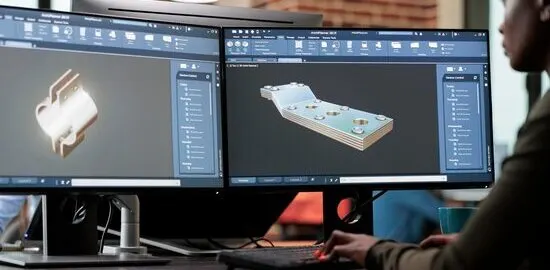
Smarter Design for Faster Market Impact
In every industry, products are becoming connected, software-defined, and electrified. For leaders, the challenge is not only to accelerate innovation but to do so with discipline to manage complexity and avoid expensive design iterations. That is where ITC Infotech’s Integrated Design Engineering Services deliver measurable business results. By integrating mechanical, electrical, and mechatronics design with intelligent automation, simulation, and AI-driven validation, we reduce development cycles, improve design precision, and enable global teams to collaborate in real time.
Read more Read less
Our approach integrates digital twin modeling, automated CAD design, AI-driven quality checks, PLM-connected workflows, simulation-based optimization, and automated publishing. From concept to delivery, every stage benefits from secure, digital-first execution. The result is future-ready engineering that minimizes rework, supports next-generation manufacturing, and ensures designs meet standards the first time—allowing leadership to focus on market opportunities and growth.
Solutions
Reduce complexity, accelerate development, and deliver compliant designs.
Digital Twin Enablement
Create digital replicas of products and systems to simulate performance, enable predictive maintenance, and support smart manufacturing.
Knowledge-Based CAD Design Automation
Capture and reuse engineering knowledge using templates, logic, and automation to reduce manual effort and efficiently scale designs.
AI-Driven CAD Validation
Perform automated checks against design rules, metadata, and compliance standards using AI-powered engines, ensuring first-time-right designs.
Remote CAD Processing & PLM Integration
Enable secure backend CAD execution through the web UI that is fully integrated with PLM platforms for model access, updates, and workflow triggers.
Simulation-Based Design Optimization
Use early-stage FEA, CFD, and system-level simulations guided by AI to drive design improvements with faster convergence and lower risk.
Automated Technical Content Publishing
Push updates directly from PLM to publications with minimal manual effort, supporting AR, 3D, and multimedia content formats.
Services
Prepare for tomorrow with intelligent, future-ready engineering.
Accelerators & Tools
CAD Automation Framework
Reduces design effort by up to 50% with parametric modeling and embedded design logic for scalable variant development.
Engineering Data Validator
Automatically verifies model integrity, drawing compliance, and metadata accuracy, flagging issues in real time.
Digital Work Instructions Generator
Transforms CAD/PLM inputs into dynamic, step-by-step work instructions—configurable by product, geography, or user role.
Interactive 3D Publication Toolkit
Rapidly creates spare parts catalogues and service manuals with integrated 3D and multilingual capabilities.
CAD Design Automation & Validation Tool
Automates 3D/2D CAD generation and compliance validation using a web-based, rule-driven platform. Integrates with Creo, Windchill, Vault, and KOLA to deliver scalable, secure, and intelligent design workflows.
Partners
FAQs
1. How do digital twins improve engineering efficiency?
Digital twins replicate product behavior virtually, reducing physical prototypes, often by up to 30% and enabling predictive maintenance that cuts downtime.
2. Why use AI in CAD validation?
AI-driven validation detects errors against compliance rules instantly, helping companies achieve first-time-right designs and eliminate rework that typically adds 25% cost in product development.
3. How can design automation impact time-to-market?
Rule-based CAD design automation substantially reduces manual modeling effort by accelerating variant development and enabling faster response to shifting market demands.






